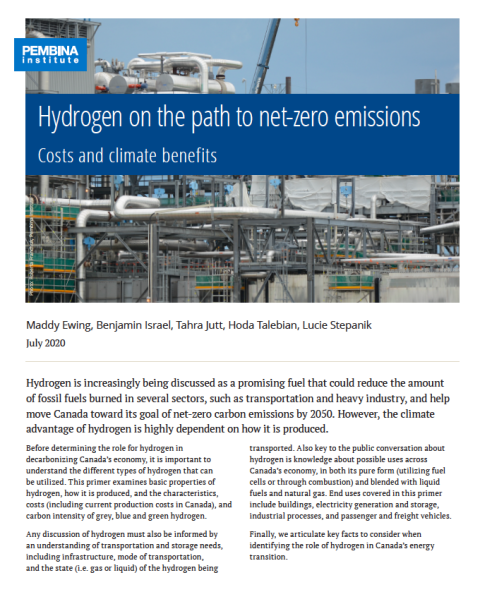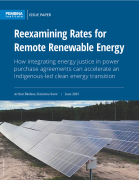Hydrogen is increasingly being discussed as a promising fuel that could reduce the amount of fossil fuels burned in several sectors, such as transportation and heavy industry, and help move Canada toward its goal of net-zero carbon emissions by 2050. However, the climate advantage of hydrogen is highly dependent on how it is produced.
Before determining the role for hydrogen in decarbonizing Canada’s economy, it is important to understand the different types of hydrogen that can be utilized. This primer examines basic properties of hydrogen, how it is produced, and the characteristics, costs (including current production costs in Canada), and carbon intensity of grey, blue and green hydrogen.
Any discussion of hydrogen must also be informed by an understanding of transportation and storage needs, including infrastructure, mode of transportation, and the state (i.e. gas or liquid) of the hydrogen being transported. Also key to the public conversation about hydrogen is knowledge about possible uses across Canada’s economy, in both its pure form (utilizing fuel cells or through combustion) and blended with liquid fuels and natural gas. End uses covered in this primer include buildings, electricity generation and storage, industrial processes, and passenger and freight vehicles.
Finally, we articulate key facts to consider when identifying the role of hydrogen in Canada’s energy transition.
Download the primer, or read the key takeaways below.
Key takeaways
- Hydrogen can play a role in decarbonizing Canada’s energy systems.
- In terms of climate benefits, not all hydrogen is created equal:
- Grey hydrogen is made by extracting hydrogen from natural gas using thermal processes such as steam methane reformation. It offers little to no climate benefit.
- Blue hydrogen is made by extracting hydrogen from natural gas, and then using carbon capture and sequestration technology to store the remaining carbon. It has a low to moderate carbon intensity.
- Green hydrogen is made by extracting hydrogen from water using electrolysis powered by renewable energy. With the lowest carbon intensity, it offers the greatest climate benefit.
- Low-carbon hydrogen can be used to reduce emissions in hard-to-decarbonize sectors, but currently only a small fraction of hydrogen produced worldwide is low-carbon.
Update (August 2020)
Please note the following minor update was made to the report after initial publication on July 9, 2020:
- Page 6: Endnote 19 was revised to link to the main report of the BC Hydrogen Study rather than the appendix.







